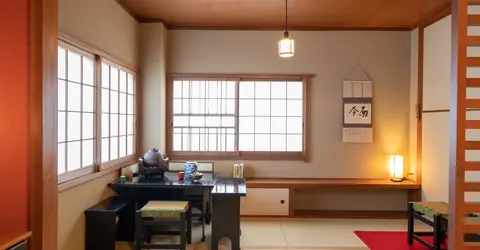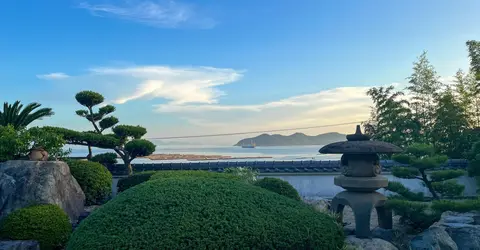Korakuen Garden 後楽園
- Published on : 29/09/2020
- by : Mark Brazil
- Youtube
When it comes to Japan's most beautiful gardens, Korakuen garden is regarded as one of the best, along with Kenrokuen in Kanazawa and Kairakuen in Mito.
Korakuen Garden Okayama
Behind each great cultural icon lies a unique and individual history. In the year 1687, Ikeda Tsunamasa, the feudal lord (daimyo) of Okayama, decided to lay out a garden in his domain; not just any garden, but a large one of some 13 ha on what is now an island in the Asahi River. It was constructed by Tsuda Nagatada and completed in 1700, and neither the daimyo, nor his garden designer, could possibly have imagined just how famous that garden, Koraku-en, would become.
For nearly two hundred years Koraku-en remained the private domain of the daimyo and his family, overlooked by Okayama Castle, where they and important guests could be entertained.
It was only occasionally opened to the public for their pleasure too, but all that was to change in 1884, when its ownership was transferred to the Okayama Prefectural government and it became a public pleasure garden.
Koraku-en Garden suffered catastrophically twice, first during severe floods in 1934, and then again during wartime bombing in 1945, but one of its unique features helped save it for posterity. The original garden, and the various changes made to it down the generations, was faithfully recorded in paintings, plans and documents that survived, some of them in the Ikeda family archives.
As a consequence of the unusual amount of surviving illustrative information, not only was it possible to reconstruct the garden in the decades after the Second World War, but it was done so successfully that Koraku-en was designated by the government, in 1952, as a special scenic location, giving it recognition as an important, historical, cultural asset to be maintained for future generations.
Today, Koraku-en is nationally, and internationally renowned, along with Kenroku-en in Kanazawa, and Kairaku-en in Mito, as one of Japan's three greatest gardens. Surely this is something for which Lord Ikeda and Tsuda Nagatada would be surprised and immensely proud.
Koraku-en Garden is most aptly described as a "strolling garden", or as a "scenic promenade garden" (Kaiyu), which has the unusual feature, for such a garden, of a large area of grass lawn, amounting to nearly two hectares. The garden does a marvellous job of presenting the strolling visitor with varying vistas, and new views at each turn of the various pathways that encompass the pond, the stream, the lawns and the teahouse - the Ryuten Pavilion with a small stream flowing directly through it. It is the unexpected nature of these changing views that make this a garden so easy to return to and to enjoy over and over again. Plants which can be enjoyed in season include pine, maple, plum and cherry trees.
The paths wander, taking the stroller through small areas of pine woodland, past tiny Inari shrines, past elegant, shingle roofed teahouses, over irregular stepping stones, beneath groves of cherry trees, and into a small area of rice paddies. The garden was designed thematically, based on a Confucian saying that first a wise ruler must attend to his subjects before he attends to his own, and so it is known as the "garden of pleasure after".
Surprisingly, for a strolling garden, there are small rice fields, and rows of tea bushes, where it is said the family of the lord tended to the plants so as to better understand the lives of the common people; perhaps they pondered the writings of Confucius as they did so. All the time, while moving through the garden, the dominant feature to the south is of the castle. This view, a classical example of the borrowed view includes the Okayama Castle, yet the castle itself lies beyond the garden, and is not part of it, in fact it is on the other side of the Asahi River.
Okayama proudly asserts itself as the location for the famous folk tale of Momotaro, the peach boy, and it is no doubt with that in mind that one of the main, and surprising, distractions in the garden is the sale of delicious peach-flavoured soft ice-cream (not to be missed!).
Another surprise comes on turning a corner and finding a trio of large cages containing pairs of Red-crowned Cranes. These rare and elegant birds even breed here in captivity and at certain times of year one may witness their courtship displays and hear their dramatic bugling calls echoing through the garden. On rare and very special occasions the cranes are released and they too are allowed the freedom to stroll in the famous garden.
Address, timetable & access
Korakuen Garden
Address
1-5, Kita-ku
703-8257
Japan
Phone
+81 (0)86 272 1148Timetable
7.30 am to 6 pm (April to September); 8 am to 5 pm (October to March)Price
350 JPYAccess
From JR Okayama Station it is a short walk past the Nishi-gawa Greenway Canal to Koraku-en or hop on a bus along Momotoro-dori and get off a the Shiroshita bus stop.Website
https://okayama-korakuen.jp/section/english/guide/index.html




















